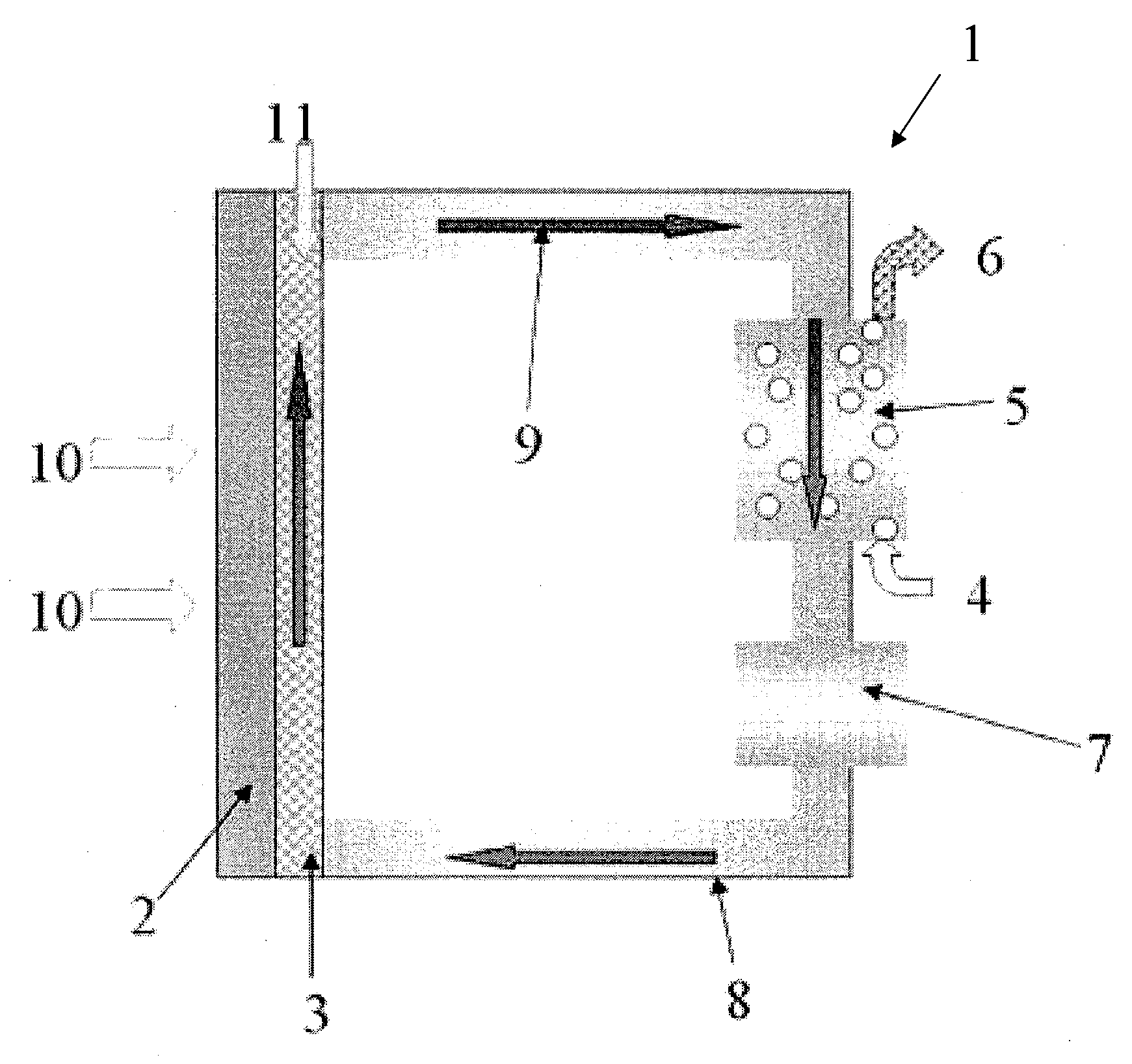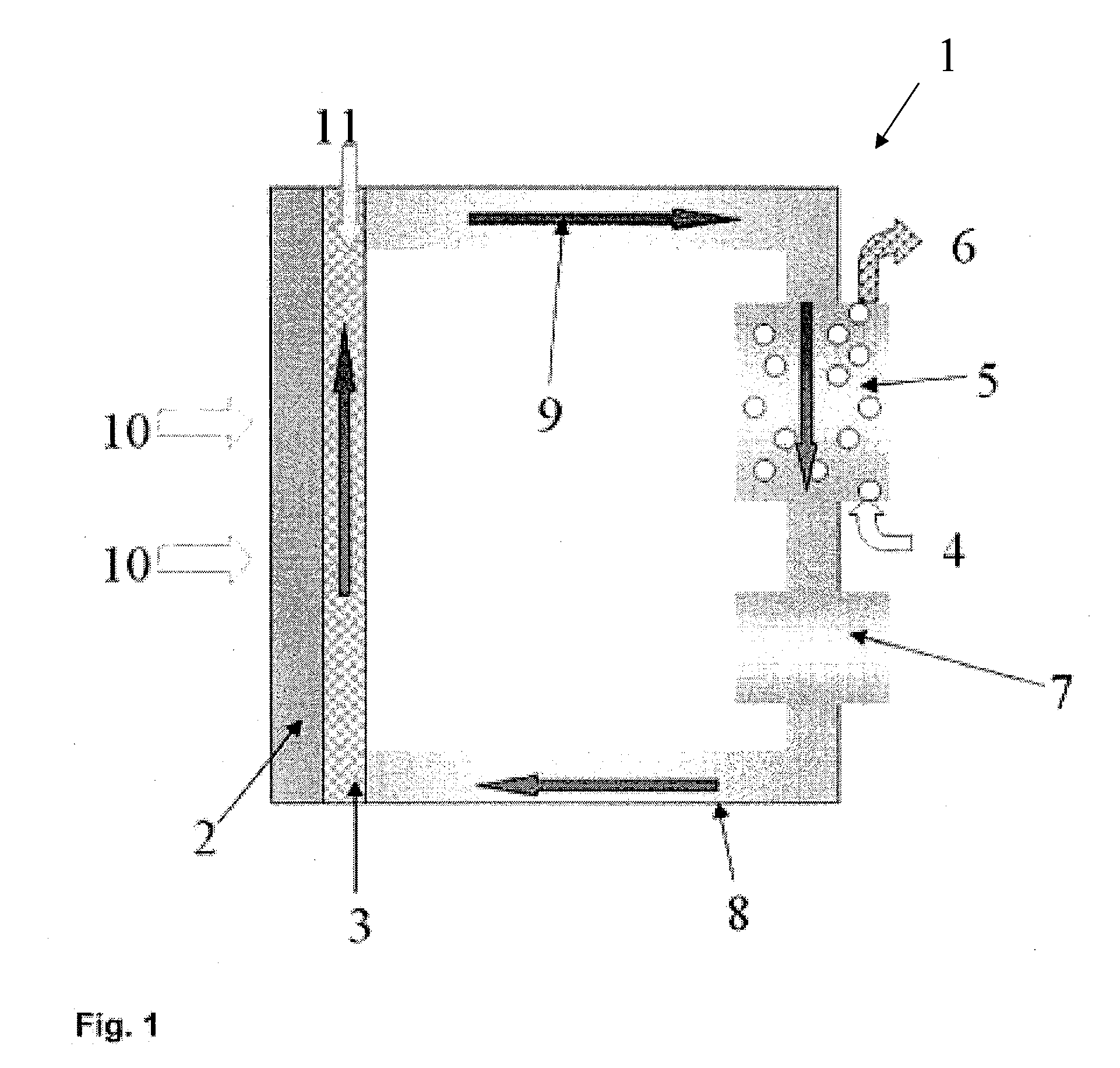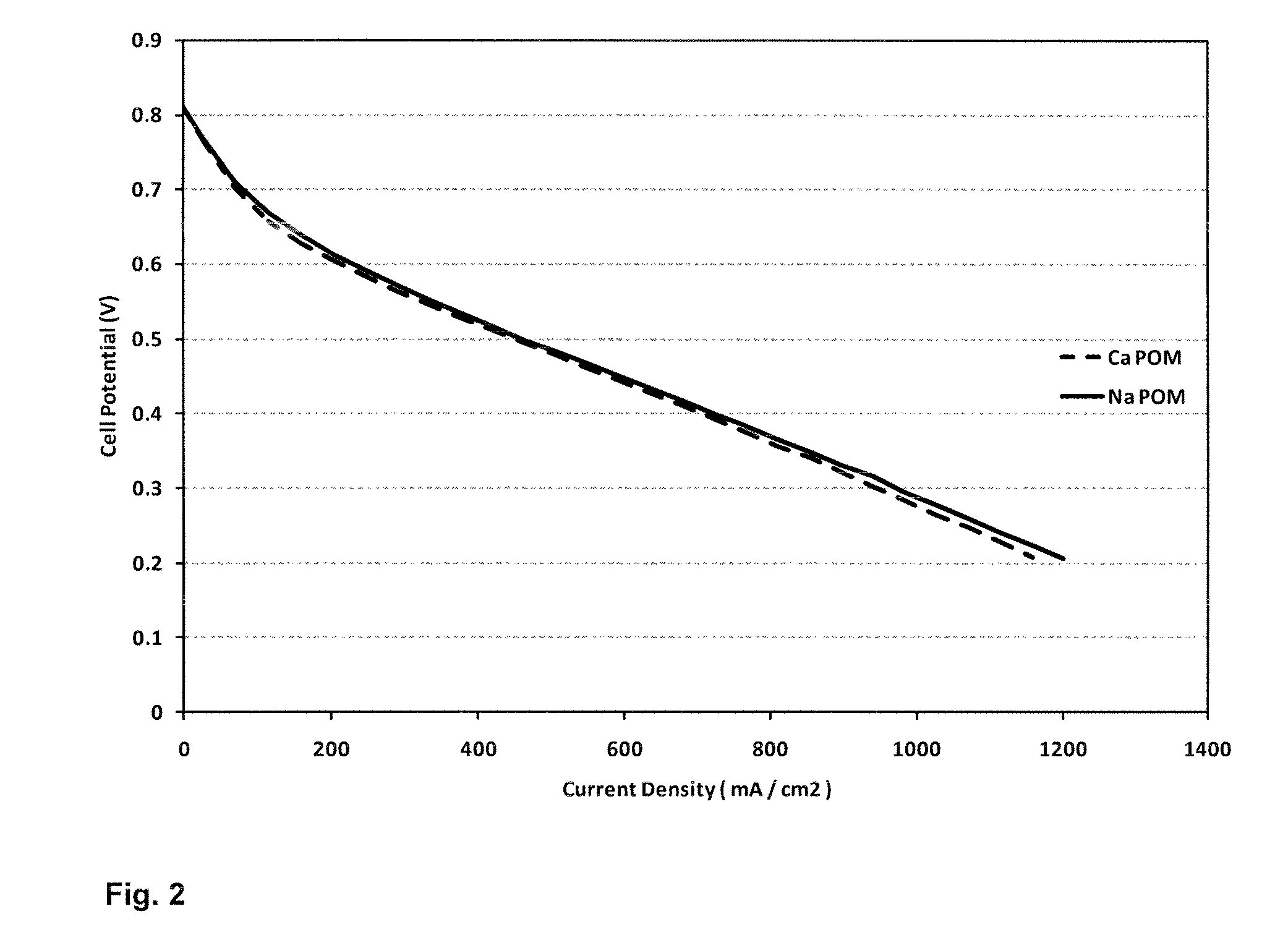Redox fuel cell
a fuel cell and redox technology, applied in the field of redox fuel, can solve the problems of electrolyte dissolution cosub>2/sub>, electrolyte dissolution needs to be replaced, and it is difficult in practice to achieve the power output of such systems approaching the theoretical maximum level, so as to reduce the net charge, increase the conductivity of the solution, and increase the conductivity of the polyoxometallate system
- Summary
- Abstract
- Description
- Claims
- Application Information
AI Technical Summary
Benefits of technology
Problems solved by technology
Method used
Image
Examples
example 1
[0086]An experiment was conducted to examine the effect of adding either sodium or calcium ions to a steady state acidified polyoxometallate catholyte.
[0087]A fresh sample of 0.3 M Na4H3PMo8V4O40 was subjected to five ion exchange processes using Dowex-50WX8 acidic resin. Titration of the resulting solution with NaOH gave results consistent with a molecular formula of Na1.5H5.5PMo8V4O40. This solution was partially reduced in the fuel cell by drawing a current and a steady state equilibrium was reached by allowing the solution to regenerate through contact with air.
[0088]A 35 ml aliquot of the equilibrium mixture was subjected to the addition of known amounts of either calcium hydroxide or sodium hydroxide and the resulting solution pH and conductivity were measured. Data is presented in Table 1 for the addition of calcium hydroxide and Table 2 for the addition of sodium hydroxide.
[0089]
TABLE 1Amount ofCa(OH)2 addedpHConductivityCa2+ / OH− / MeasurementMeasurementmmolesmmolespHT / ° C.Con...
example 2
Synthesis of 200 mL of 0.3 M H6PMo9V3O40 (aq) and CaH4PMo9V3O40 (aq)
[0094]Adapted from the synthesis of HaPzMoyVxOb solutions by V. F. Odyakov, E. G. Zhizhina and R. I. Maksimovskaya in Applied Catalysis A: General, 2008, 342, 126-130.
Synthesis of H9PV14O42 solution
[0095]Water (250 mL) was cooled in an ice bath to approximately 5° C. To this solution was added V2O5 (5.46 g, 0.030 moles) and a further amount of water (50 mL). The mixture was stirred and maintained at 5° C. whilst hydrogen peroxide (45 mL of 30% solution in water) was added. After stirring for 30 minutes and ensuring the temperature did not exceed 12° C., the solution had turned clear deep red in colour. To this solution was added 7.183 M H3PO4 (aq) (1.16 mL) which caused the solution to turn brown after 1 hour of stirring below 40° C.
[0096]Alongside the preparation of this solution, a repeat reaction was carried out on double the scale with 10.92 g V2O5 in 500 mL ultrapure water and adding 90 mL of 30% H2O2 (aq) and ...
example 3
Fuel Cell Tests of Ca POM System
[0100]0.3M CaH4PMo9V3O40 polyoxometallate solution was prepared and installed in a fuel cell with flow-through cathode electrode. The cell had an active area of 48×48 mm, with a reticulated vitreous carbon electrode 2 mm deep. An ion-power NRE212 half-MEA was used, with an anode Pt loading of 0.3 mg cm−2. An E-Tek 1400LT woven gas diffusion layer was used at the anode. The cell was operated with hydrogen at the anode and a cell operating temperature of 82° C. FIG. 2 compares the cell polarisation curve with that obtained for an identical cell using 0.3M Na3H3PMo9V3O40 as a catholyte.
[0101]As can be seen, the fuel cell performance of the two catholyte systems is very similar. This indicates that the Ca2+ counter-ions are not adversely affecting the Nafion membrane, as would be expected if Ca2+ ions were dissociated from the main POM6− ion and free to enter the membrane structure. Surprisingly, it appears that the Ca2+ must be preferentially bound to th...
PUM
| Property | Measurement | Unit |
|---|---|---|
| temperature | aaaaa | aaaaa |
| volume | aaaaa | aaaaa |
| volume | aaaaa | aaaaa |
Abstract
Description
Claims
Application Information
 Login to View More
Login to View More - R&D
- Intellectual Property
- Life Sciences
- Materials
- Tech Scout
- Unparalleled Data Quality
- Higher Quality Content
- 60% Fewer Hallucinations
Browse by: Latest US Patents, China's latest patents, Technical Efficacy Thesaurus, Application Domain, Technology Topic, Popular Technical Reports.
© 2025 PatSnap. All rights reserved.Legal|Privacy policy|Modern Slavery Act Transparency Statement|Sitemap|About US| Contact US: help@patsnap.com



